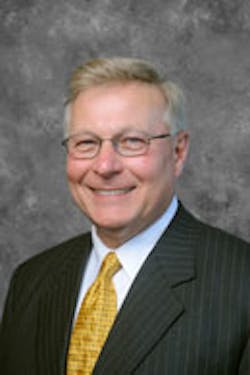James Hebe – the controversial former president & CEO of Freightliner LLC – has rejoined the executive ranks of the truck manufacturing industry as senior vp of North American sales operations for Navistar.
Navistar said Hebe will be responsible for sales, dealer operations and central sales administration. According to online news reports, Hebe is replacing Dave LaPalomento, who is moving to Navistar’s engine group.
In many ways, Hebe’s career has come full circle with his new position at Navistar. He originally joined the trucking manufacturing industry in 1972 with fire-truck maker American LaFrance, before moving to then-named International Harvester – now Navistar – before taking an executive sales position at Kenworth Truck Co.
Hebe joined Freightliner in 1989 – owned by what is today Daimler AG of Germany – and helped guide the company’s transformation from an also-ran in the business to the top seed in terms of market share for Class 8 truck sales in U.S. – that ranking the company (now known as Daimler Truck North America) stills maintains to this day, as it garnered a 38.2% Class 8 market share in 2007.
Hebe also oversaw a wide-ranging set of acquisitions by Freightliner during his tenure, starting with his original employer American LaFrance in 1996, followed by Ford’s heavy-duty truck business in 1997 (renamed Sterling Trucks), Thomas Built Buses in 1998, and Canadian truckmaker Western Star in 2000. Daimler also purchased truck engine maker Detroit Diesel Corp. in 2000, eventually making DDC engines the standard model selection for most Freightliner and Sterling brand trucks.
However, a major initiative Hebe launched in the late 1990s backfired in the economic downturn that began in 2000. Offering “guaranteed residuals” for the value of Freightliner used trucks enabled the company to win huge fleets as customers (notably J.B. Hunt and Schneider National), but the subsequent economic slump left Freightliner awash in used trucks it couldn’t sell.
“We also sold too many new trucks to owner-operators who couldn't afford them,” Hebe said at the time. “We should have sold them used ones that would have allowed them to build reasonable business equity.”
Daimler AG (then known as DaimlerChrysler) replaced Hebe with Rainer Schmückle, Freightliner’s former CFO, in May 2001.
Hebe later joined a group of private investors managed through Ballamor Capital Management Inc. to buy the assets of Seagrave Fire Apparatus LLC and its parent company, FWD Corp., from Corsta Corp. in 2003, becoming CEO of the company. He left Seagrave after several years to become the principle of Co-Van/Cascadia International, a Vancover, BC-based Navistar dealership.
About the Author
Sean Kilcarr
Editor in Chief
Sean Kilcarr is a former longtime FleetOwner senior editor who wrote for the publication from 2000 to 2018. He served as editor-in-chief from 2017 to 2018.
